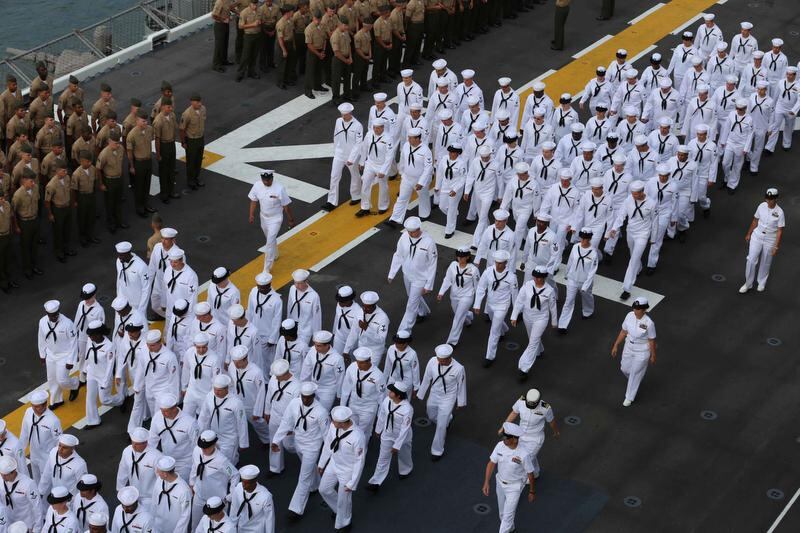The smallest U.S. military force in more than 80 years is about to get even smaller.
Under end strength levels outlined in the annual defense authorization bill passed by the Senate Wednesday evening and expected to be passed by the House on Thursday, the total number of active-duty troops in the armed forces will drop to 1,284,500 in fiscal 2024. That’s down nearly 64,000 personnel in the last three years and the smallest total for America’s military since 1940, before the United States’ entry into World War II.
Lawmakers say the reason for the lower target isn’t a decrease in missions or threats in recent years. Instead, the number reflects recruiting challenges across the services and an expectation of what level of personnel is realistic in coming months.
Despite bipartisan support for the authorization bill calling for a reduced force size, several lawmakers said they are worried the reduction is already putting the country at risk.
“We need a larger force, in every branch,” said Sen. Roger Wicker, R-Miss., and ranking member of the Senate Armed Services Committee. “But the reality of recruiting is driving the numbers, not what we actually need.”
RELATED

Ashish Vazirani, the Defense Department’s acting undersecretary for personnel and readiness, told the House Armed Services Committee on Wednesday that the individual services missed their recruiting goals in fiscal 2023 by a combined 41,000 people. With the exception of the Space Force — which was stood up in 2022 — all of the Defense Department service branches have seen significant cuts in active-duty numbers since the end of 2020.
Cuts to the Army have been the most severe. The FY24 NDAA calls for a force of 445,000 active-duty soldiers, down more than 40,000 (8.4%) in three years.
The Marine Corps is poised to be 8,900 active-duty service members smaller than in fiscal 2021, a 4.9% reduction. The Air Force is set to be down 13,475 airmen, 4% lower. The Navy is expected to have 10,000 fewer sailors, down 2.9%.
The final end strength targets for the services decreased not only from last year but also from last summer, when the House and Senate Armed Services committees first proposed their goals for fiscal 2024. Senators had proposed 11,000 more personnel in the early draft of the bill. House members initially voted for almost 21,000 more.
However, after the Army, Navy and Air Force all missed recruiting targets this fall, the end strength hopes for next year were dropped in the final compromise legislation. Robert Greenway, director of the Heritage Foundation’s Center for National Defense, believes that is a mistake.
“Instead of addressing the problem, the answer has been to move the goalposts and reduce the positions in the services,” he said. “So they are institutionalizing the problem, and that’s not a good approach.”
Greenway said too few active-duty troops sends a worrisome message to would-be adversaries such as China and Russia at a time when many European allies are also shrinking the size of their fighting forces.
Lawmakers could increase their end strength goals for fiscal 2024 as part of a defense appropriations bill next month. However, the appropriations and authorization bills typically match each other, and the funding bill is already facing political challenges related to overall federal spending.
Service officials said they expect to face difficulty meeting their recruiting goals for next year, even with the lower targets.
Leo covers Congress, Veterans Affairs and the White House for Military Times. He has covered Washington, D.C. since 2004, focusing on military personnel and veterans policies. His work has earned numerous honors, including a 2009 Polk award, a 2010 National Headliner Award, the IAVA Leadership in Journalism award and the VFW News Media award.





